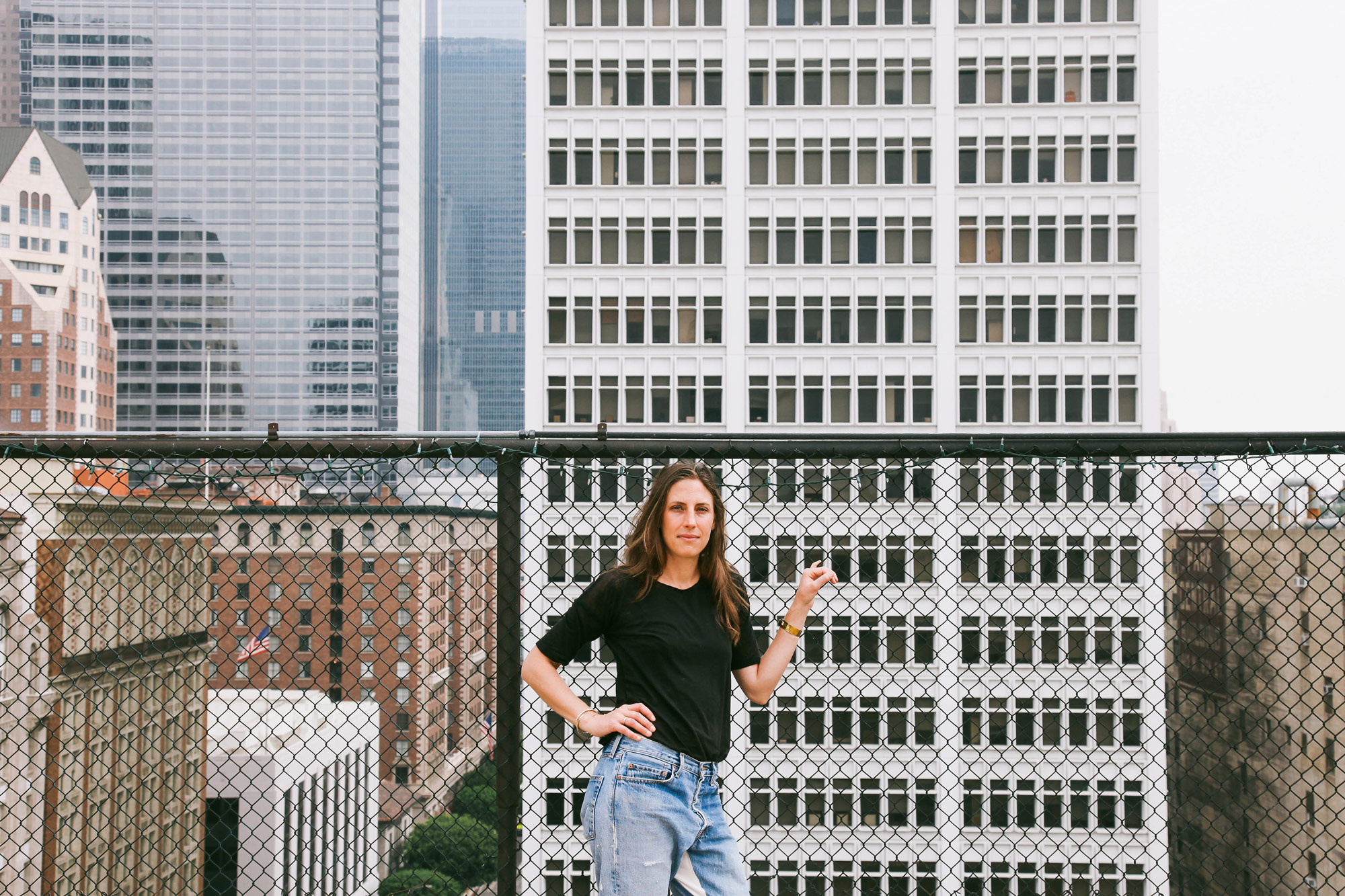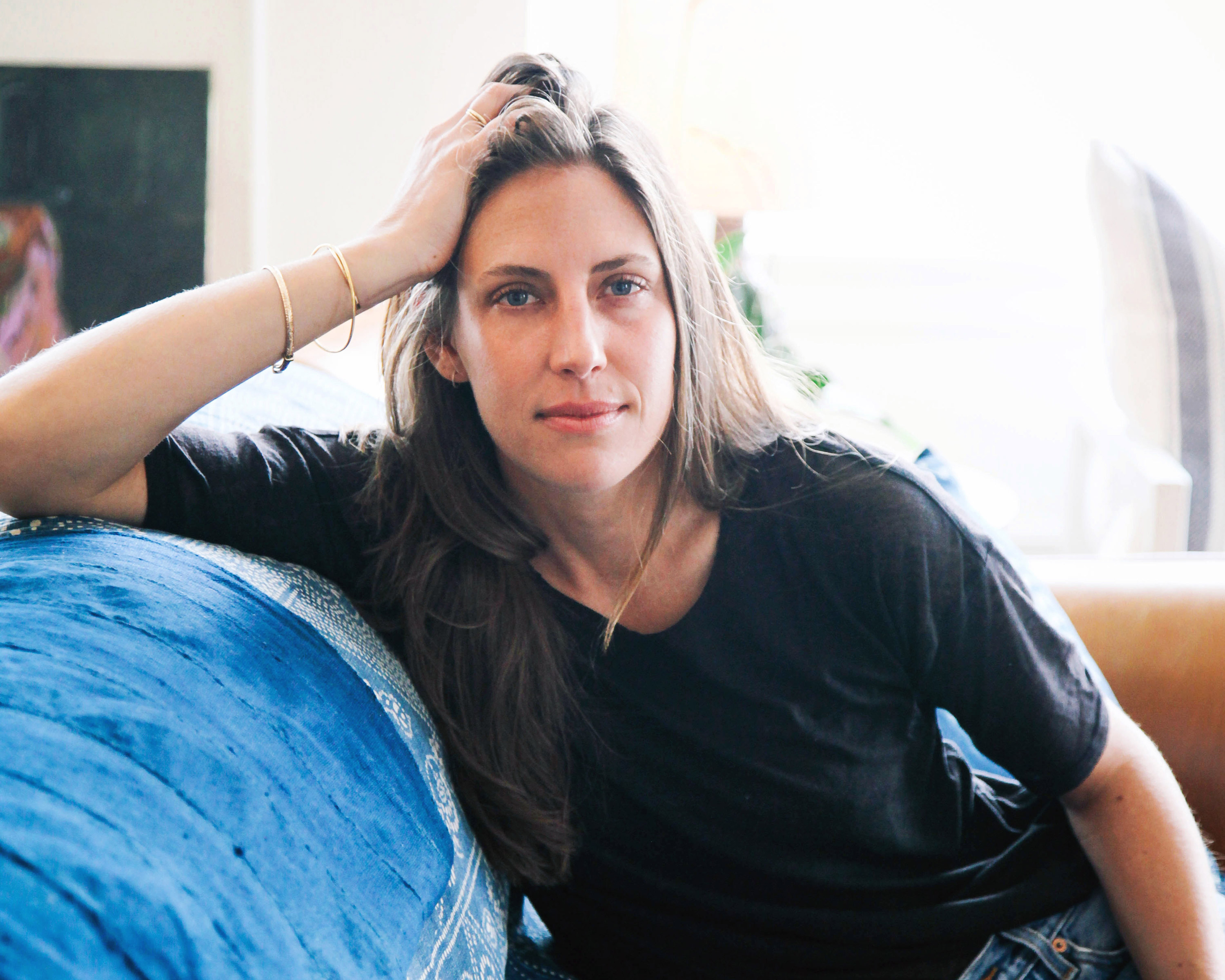
- Interview by Tina Essmaker May 25, 2017
- Photography by Amy Dickerson
Ruth De Jong
- artist
- production designer
LA-based artist and production designer Ruth De Jong recalls her unexpected path into production design, which began when art director Jack Fisk recruited her to work with him on There Will Be Blood. Embracing her innate talent and driven to learn, Ruth has risen to the top of her craft becoming known for her work on Manchester by the Sea and David Lynch’s new installment of Twin Peaks. Here, Ruth opens up about what she’s learned from her mentors, the process of bringing a script to life, and why she has no regrets about forgoing grad school to work in film.
Tell me about where you grew up and how your childhood influenced your ideas about creativity and what was possible. I was born in San Bernardino, CA, and we lived up in Waterman Canyon. I spent my childhood roaming the woods, building forts and villages out of sticks and rocks, and playing in the creeks beside our home. When I think back to my childhood, I realize that the little villages and forts I built were definitely channeled into my work later in life. Being in the wild and having a sense of freedom weighed into my pursuit of fine arts and set design, but I had no idea at the time. When I was 12, my family moved to Virginia and that was a big change!
You originally wanted to be a painter and you studied art in college, right? My first passion was photography. That came from my Dad who was a photojournalist and gave me my first camera, a Nikon FM2. I helped start a photography department and club at my high school, and we had a darkroom where we developed our own film and prints. I took my interest in photography to college at Texas Christian University (TCU) in Fort Worth, Texas. It was there, while studying fine arts, that my passion for painting came alive. I also played soccer for TCU, so it was an interesting combo being a student athlete and studying fine arts. I earned my BFA in painting and photography. After graduation, I applied to grad school at several places to get my MFA in painting and I decided to go to Pennsylvania Academy of Fine Arts in Philadelphia.
However, the summer before going to grad school I had a long conversation with production designer Jack Fisk. Jack’s daughter, Schuyler, and I were best friends in Charlottesville, and Jack is married to the actor, Sissy Spacek. I knew they were involved in film, but film wasn’t a medium I had studied or pursued much less paid attention to. I wasn’t a cinefile who watched movie after movie. Jack and Schuyler knew my work and interest in fine arts, and one day Schuyler planted the seed that I should pursue art direction.
I distinctly remember the evening we all sat around the dining room table late into the night and Jack and I talked about art direction for hours. He told me, “I’m about to go do this film called There Will Be Blood with Paul Thomas Anderson.” I had to Google Paul Thomas Anderson because I didn’t know who he was! Jack said I should consider coming to work with him on the movie, but that meant I wouldn’t be able to do the film and grad school. I thought about it and decided to defer for a year—most certainly I’d go the following year. I never went to grad school. Instead, I moved to LA and started art directing and designing, and went on to work for Jack for the next ten years. Words cannot sum up what an incredible adventure and experience that was. That’s the short version of how I got into this.
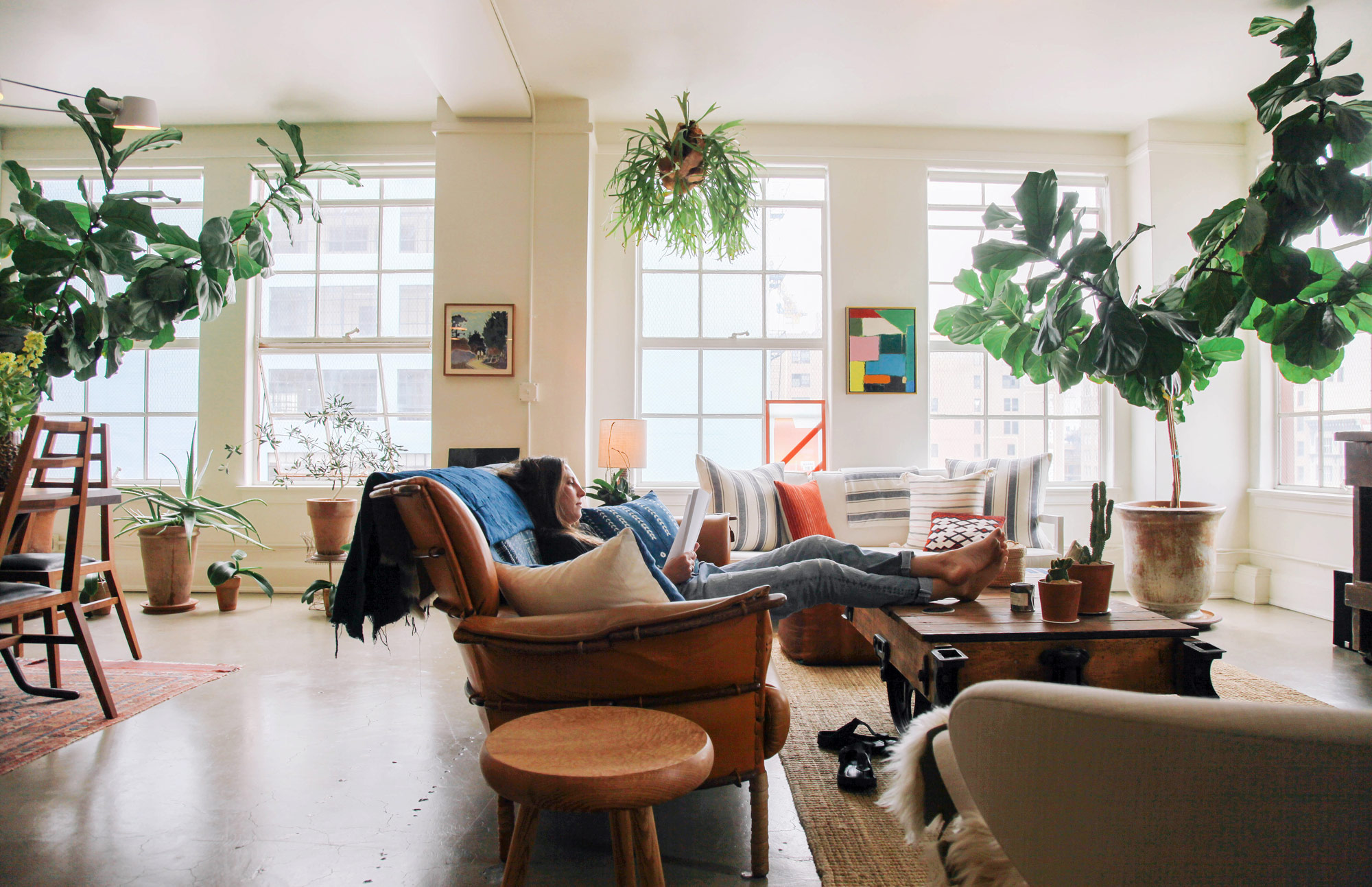
“I spent my childhood roaming the woods, building forts and villages out of sticks and rocks, and playing in the creeks beside our home…Being in the wild and having a sense of freedom weighed into my pursuit of fine arts and set design…”
So your career was an accident. You were naive about Hollywood and for you the real draw for production design was the opportunity to create? Jack is a creator; he physically builds, paints, sculpts, makes. That was inspiring because everything I made in school was hands-on. I created everything, whether that was stretching my own canvases or making sculptures, taking pictures or painting in oil. Jack said, “Ruth, you can take all those mediums you love—sculpture, painting, photography and the study of light—and this job allows you to experience and do all of them. Not only do you not have to pay for it, you get paid.” I thought it was too good to be true, but Jack was so passionate about what he did that I started to pay attention and look at his body of work going back to The Badlands. He was right.
There Will Be Blood was pushed back a year or two for various reasons. Regardless, I had decided to head out to Los Angeles to pursue art direction. Schuyler went off to do a short film in Montréal and they needed a production designer. That was my very first project. From there, a mutual friend in Charlottesville was getting ready to direct his first feature, Swedish Auto, starring Lucas Haas and January Jones.
And then came There Will Be Blood with Jack, and I saw firsthand how passionate he was about designing and building sets. He loved his work and was always smiling—we have a very similar work ethic. There were so many parallels between us and we got along swimmingly. In interviews, he’s said that he saw his younger self in me. He knew I didn’t know anything about production or being on set, but there’s a small learning curve with that. What can’t really be taught was already in place and I dove in fearlessly. I wasn’t concerned with what I didn’t know and I was eager to learn.
“I appreciate designing things in the real world just as much as I do for the silver screen. The only difference is it doesn’t have to be torn down and thrown out.”
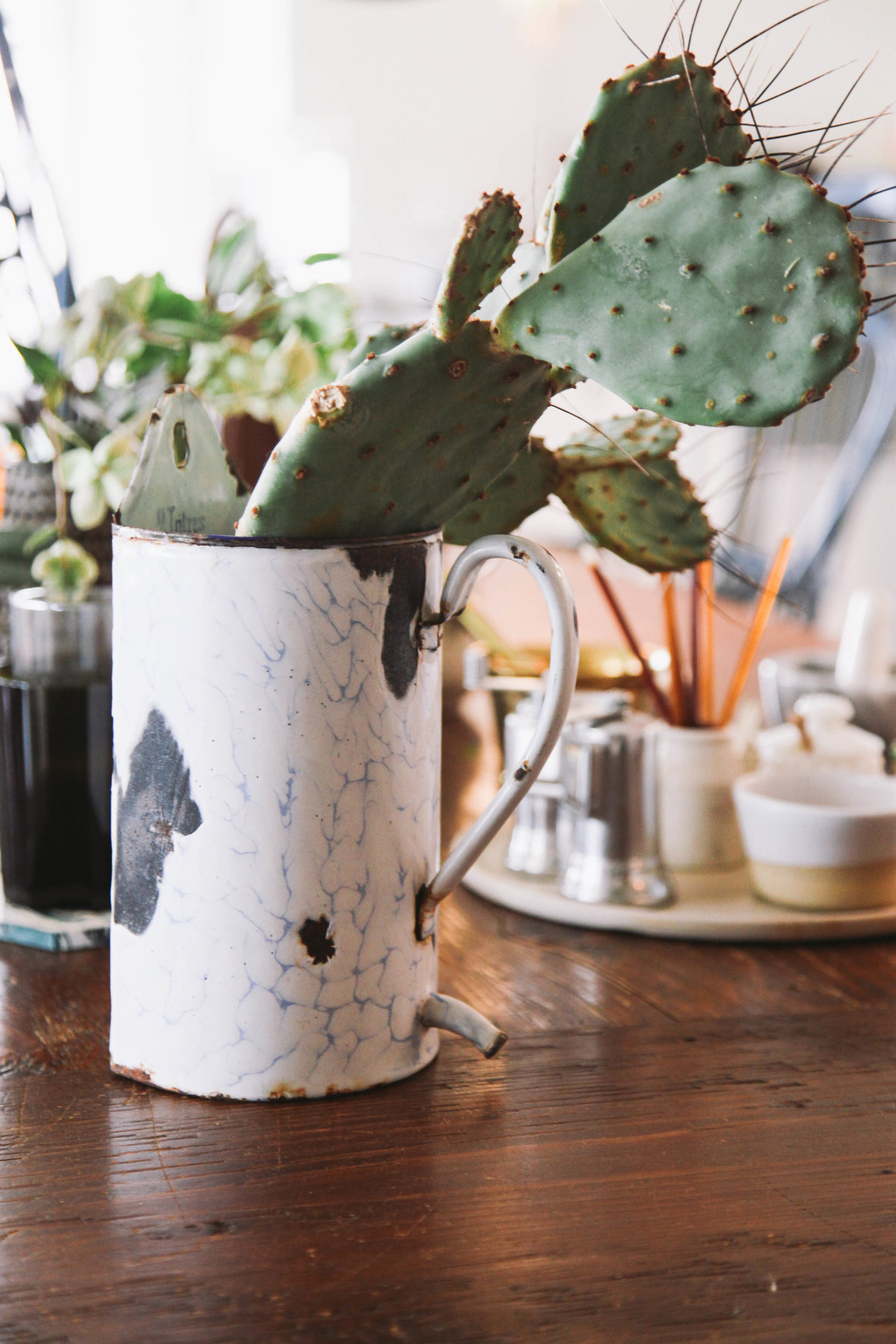
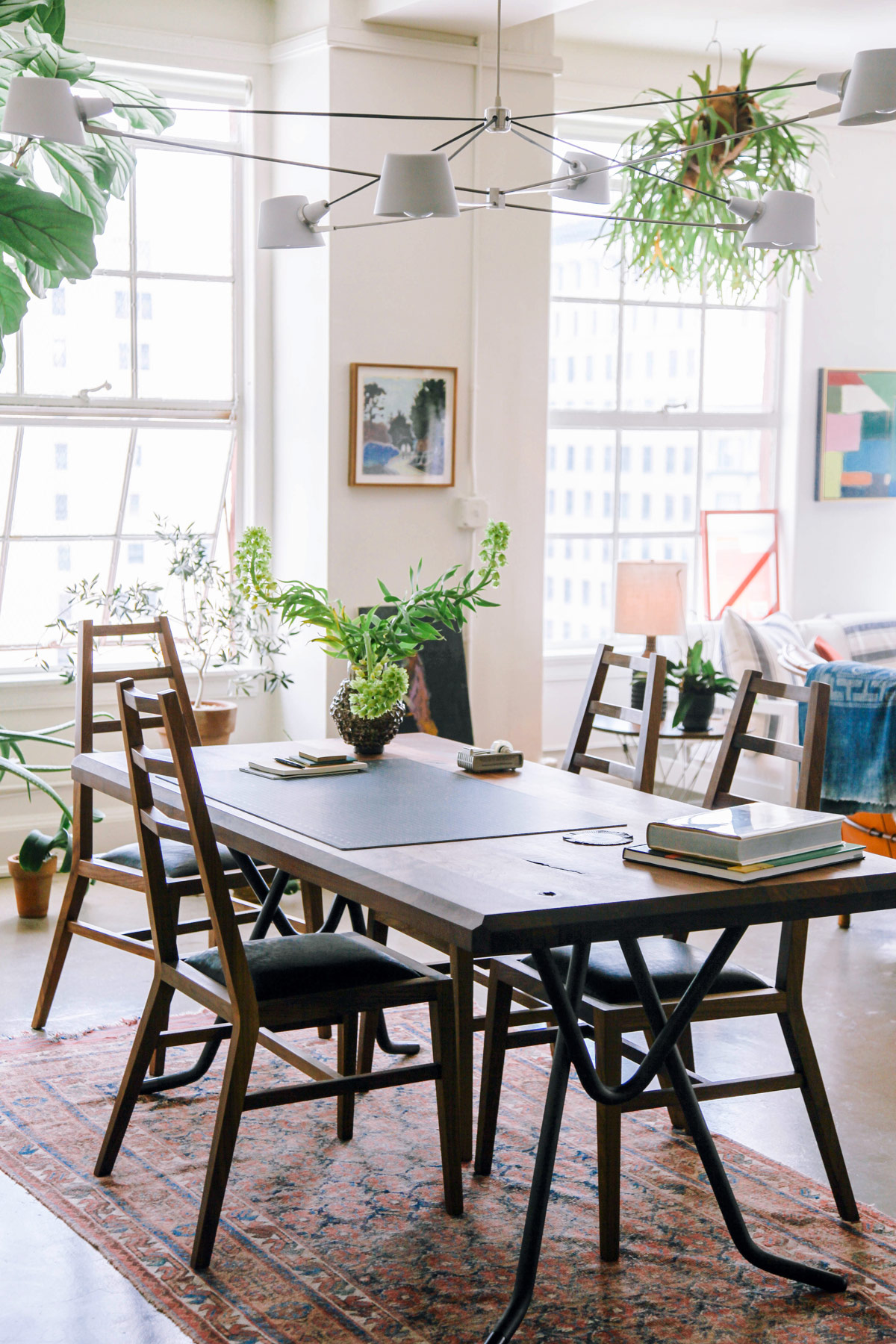
That decade working with Jack was like grad school for you, but you were studying something other than painting. How did your career evolve over those years and what did you learn from collaborating with him? I worked with Jack as his assistant on There Will Be Blood. I think my actual title was “Assistant-to-the-Production-Designer,” but he didn’t want me to push papers or get him coffee—he wanted me to research and help create the sets. It was a unique situation because Jack said, “I want Ruth. She’s going to be my right hand.” A lot of the producers were like, oh, okay. But they soon realized what a gift it was to the project. It was on There Will Be Blood that I met art director David Crank, who had previously done The New World with Jack. And that was the beginning of the three of us setting out to do several films together over the next decade.
I finally got into the union while art directing a Miranda July film in Los Angeles—it was a non-union film that flipped. I was in between projects with Jack and David; this was after we did Tree of Life and right before we did Water For Elephants. It’s a hard thing to get into the union because you have to be in the union to work on a union film, but you can’t work on a union film unless you’re in it. (laughing) I called Jack to tell him I’d gotten in and he was excited because we were about to start Water for Elephants and I could actually be a credited art director—finally!
From there, it was a natural growth. When you work with people as great as Jack and David Crank, it’s very easy to rise up. I was also very motivated and determined. I wasted no time designing on my own in between the films we did together, and that happened pretty early on. I did an indie film every two years or so in between the larger films I did with Jack and David—we did three Paul Thomas Anderson films, five Terrence Malick films, and a few others in between.
I remember when the time came for us to go our separate ways. Jack called me and said, “Ruth, I’m about to go do The Revenant.” At that point, my brothers and I had started a furniture and interior design firm together called De JONG & Co. I knew The Revenant was going to be off in Canada, and I needed to be in LA. It was a natural time to leave the nest so to speak. Leaving LA for two years wouldn’t have been the best choice, even though turning down the opportunity to be part of that epic film was heartbreaking. Even more heartbreaking was not going on another adventure with Jack.
At the tail end of The Revenant, Twin Peaks came up. David Lynch and Jack go way back. David told Jack he was about to bring back Twin Peaks and he wanted Jack to design it, but Jack wasn’t available so he recommended me. Twin Peaks came up before I worked on Manchester By the Sea, but before it got off the ground it came to a pause. It looked like Twin Peaks wasn’t going to happen, so I went and designed Manchester. Days after Manchester wrapped I got the call that Twin Peaks was happening after all—I hadn’t even returned to the West Coast yet. It was incredible timing.
“Anything is possible, and that’s what’s so exciting about Los Angeles…It’s a beautiful place that champions artist, makers, and creators and allows them to flourish.”
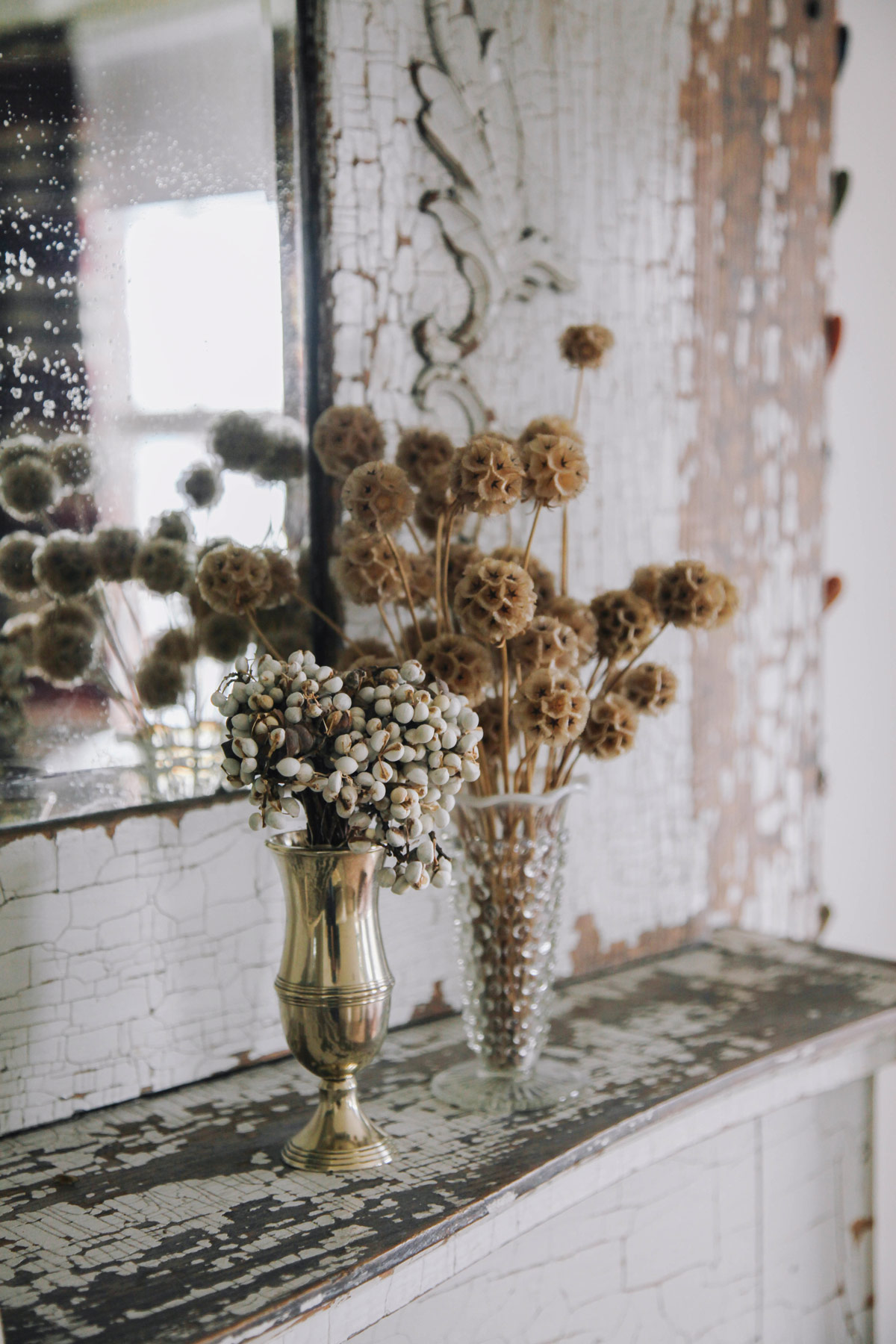
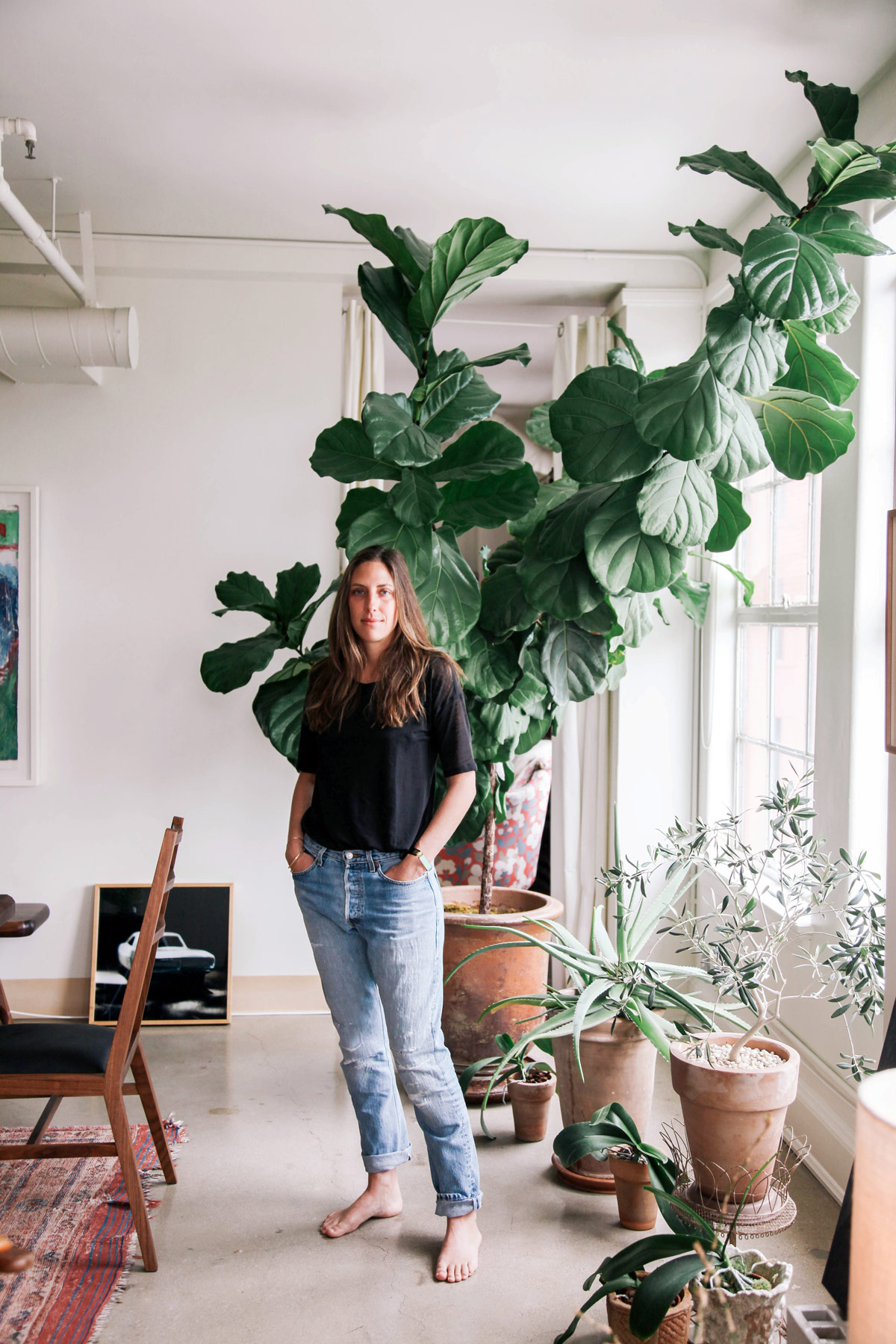
Had you seen the original Twin Peaks and were you a fan? I was young when it initially aired in the early ’90s, but I had absolutely seen it since, along with Fire Walk With Me. I can’t say I was a diehard fan, but I admired it very much—all of David’s work I find incredible and inspiring.
At first I thought David was crazy for hiring me. I was secretly scared to death. I remember thinking, “I cannot do this.” Then I remember getting calm and thinking back to the time when Jack asked me to do There Will Be Blood with him. I wasn’t scared then—I was just ready to do the work and create. I took that same approach knowing I had the knowledge and experience behind me as well.
I want to ask about the process of production design because it’s a little mysterious to me, and I’m not entirely sure what goes into it. Production designers are responsible for the entire look and feel of a production, whether that be a film, commercial, television show, or music video. We bring the overall visual look to life. It’s similar to being an architect. We do that with a team of close collaborators. I typically have my art director, set decorator, art department coordinator, prop master, construction coordinator, which is equivalent to a General Contractor, set designers who draft sets by hand or computer, and carpenters, painters, set dressers, and graphic designers.
The set decorator is like an interior designer responsible for dressing all the sets we design, the property master creates all the hand props the actors interact with, and the construction coordinator builds all of the sets from the blueprints the set designers draft. It’s my responsibility to bring the script and director’s vision to life with all of these talented people. I am very hands on and prefer to run a smaller core crew, which comes from how Jack, David, and I worked.
The world is really your canvas. What does it feel like to read a script, bring a world to life, and see it physically there in front of you? It’s amazing to take a script you’ve been reading and studying and, all of a sudden, there it is! It never gets old. Going on location and pulling it all together is what I find most inspiring. There is always a unique set of individuals and it’s usually in a place I’ve never been to before.
Before Manchester By the Sea, I had never spent any time on Cape Ann or in that neck of the woods. To be able to immerse myself in the community and learn about the people and recreate it was nerve-wracking because if I didn’t get it right, I was going to hear about it. It’s rewarding to hear people say you nailed it, or that they’re from New England and that’s exactly how it is.
The work you do requires you to become an expert on every film—the location, the time period, the culture. I can’t imagine you’d ever get bored. I’m never bored. I feel like a journalist. I have to uncover and learn on a very tight timeline. The first thing I do is go to the libraries and government buildings to learn about the history of the place. Then I go to the people, befriend them, and talk to them. Once I speak to one person, the floodgates seem to open and they recommend others for me to talk to. I meet the most interesting people and it enriches the world I build because it’s based in reality.
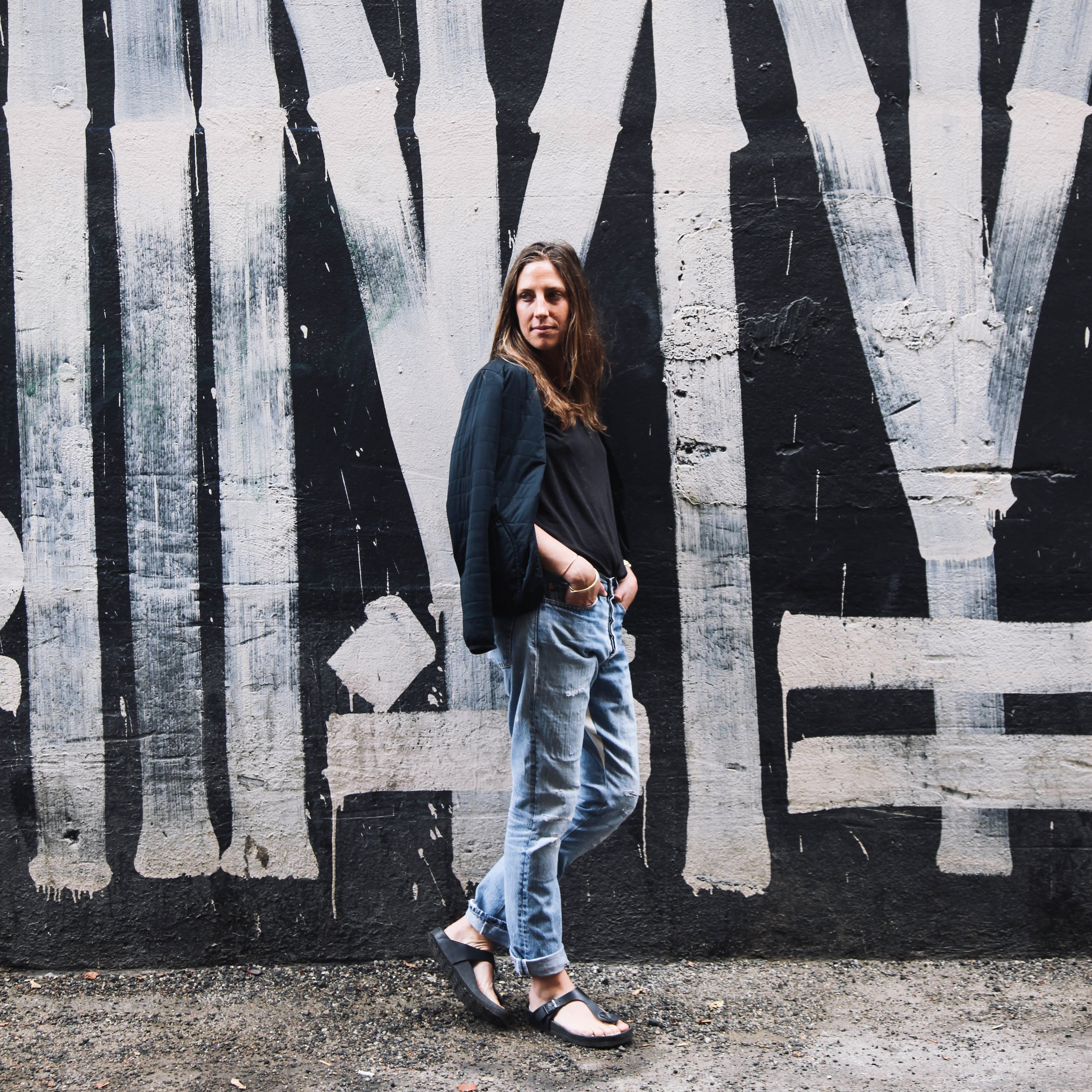
“There’s not a day I’ve looked back. There are days when I’m stressed and want to go live off the grid, but the reward of what I do far outweighs those hard days. Being entrusted with a budget to create worlds—how are people paying me for this?”
Completely. So, I want to talk to you about the other work you do, which you mentioned earlier. In addition to production design, you and your brothers started a furniture and interior design company, De JONG & Co., and you also paint in your studio. Do those things fulfill you creatively in different ways than production design does? Yes, I had just wrapped production on The Master, when my brothers and I started discussing the idea of working together. Peter, who has a background in sculpture and woodworking, was on the East Coast building furniture for BDDW, but he moved to Los Angeles when we started DJC. Our other brother, Philip, is on the East Coast and does all of our photography, graphic design, and web design with frequent visits to Los Angeles.
De JONG & Co. came about from us wanting to come together to pursue our individual crafts and support one another in doing so by starting a family business. I had begun to design interiors for friends between films and had recently designed Son of a Gun Restaurant in Los Angeles for chefs Jon Shook and Vinny Dotolo. I was and am a huge fan of Peter’s furniture and Philip’s photography. And we realized through our practices we could all contribute to what the other was doing. Thus De JONG & Co. was born.
I appreciate designing things in the real world just as much as I do for the silver screen. The only difference is it doesn’t have to be torn down and thrown out. We get to share our furniture and interiors with people to experience, interact with, and live with. It’s been hard work but it’s exciting to champion and watch it grow; and it’s extra special to be doing it alongside my siblings. I have the utmost respect for all of them—there are five of us total. The other two are on the East Coast. Rachel, our sister, is a pastry chef in Nashville, TN, and Alex, our youngest brother, is a drummer for Sleepwalkers and lives in Richmond, VA.
Is the furniture produced in LA? Yes, we have a full workshop with our office where everything is made by hand. We make everything down to our own solid brass hardware. Anything is possible, and that’s what’s so exciting about Los Angeles. We have an incredible network of vendors in this city. It’s a beautiful place that champions artist, makers, and creators and allows them to flourish. We all support and recommend one another. Our show room, which doubles for my loft, is also in Downtown Los Angeles. We sell direct to client and stock our small goods and furniture in stores across the US.
And what about painting? Do you show in galleries or sell your art? When I graduated from TCU I was showing and selling my work, but I believe you need to paint every day to have a practice and I can’t do that right now. I know that painting will be something I come back to in life. I’m not satisfied not painting, but I can’t do it all. I don’t have the bandwidth to dedicate the studio time to it at this moment, but I hope I will find the time to nurture it again in the future. I miss being in the studio painting.
“I’m not a trained architect or designer; I didn’t go to school for interior design; I didn’t know how to draft. It was a very innate thing that I got to hone under [Jack Fisk’s] tutelage and it blossomed as I came into my own.”

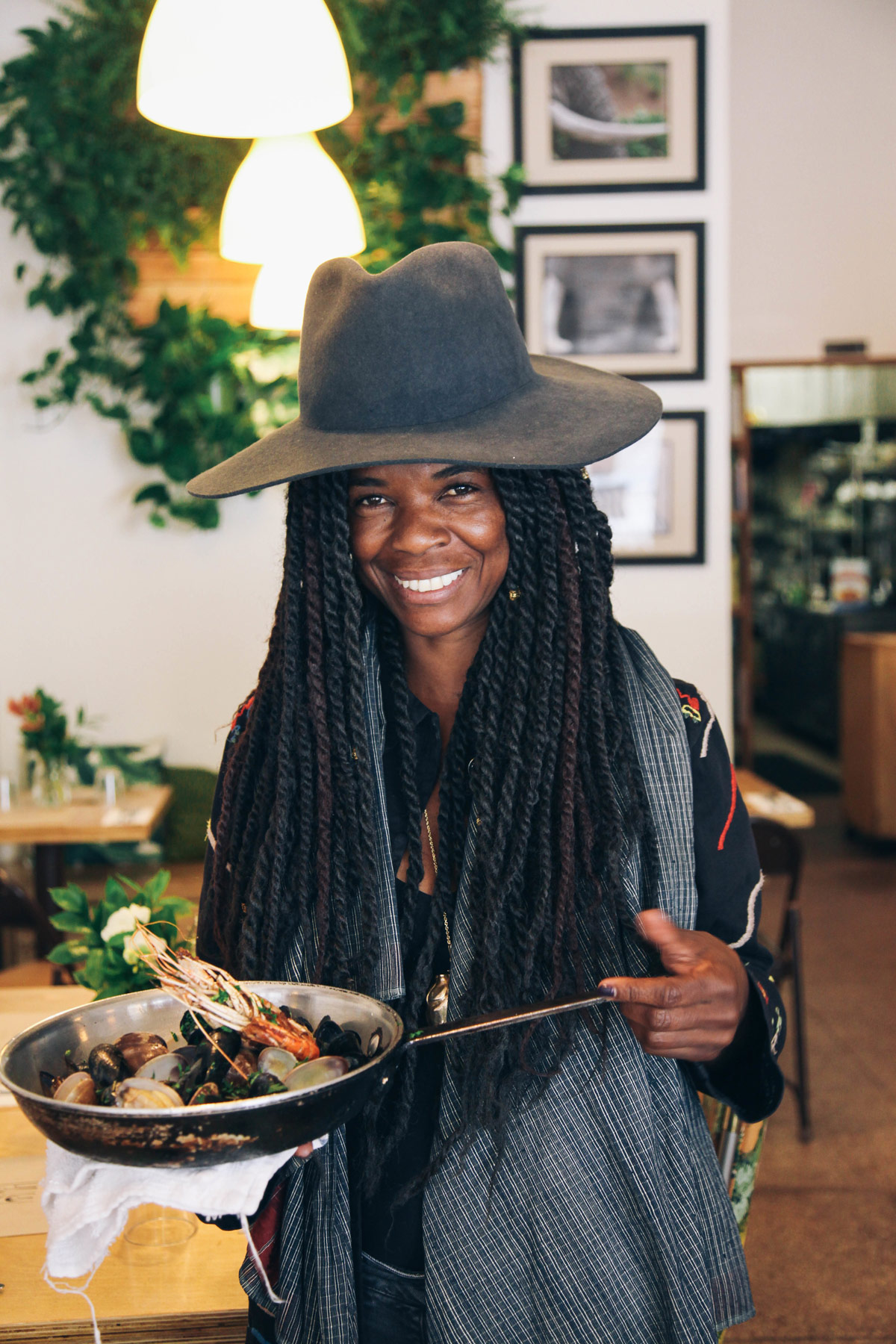
Do you ever wonder how different your life would be had you gone to grad school and focused on painting full-time? There’s not a day I’ve looked back. There are days when I’m stressed and want to go live off the grid, but the reward of what I do far outweighs those hard days. Being entrusted with a budget to create worlds—how are people paying me for this?
I’m not a trained architect or designer; I didn’t go to school for interior design; I didn’t know how to draft. It was a very innate thing that I got to hone under Jack’s tutelage and it blossomed as I came into my own. Now I’m asked to design houses, restaurants, and hotels. Really, me? It’s great to share my passion and do it as authentically as I can—as I know how to do it.
What has working on set with big teams of people taught you about collaboration? I love working with a team. I wouldn’t want it any other way! I don’t like to think of myself as a boss, although I absolutely recognize that I am one. I give all of my department heads total freedom, and it’s 100% collaborative. I don’t see it as a dictatorship because I don’t feel the need to control everyone’s decisions or the way they work. That makes for a very beautiful place to create.
Film is all about teamwork because you’re entrusting your decorator, builder, or painter to create what you’ve drawn or articulated to them without micromanaging. It’s taken many years to handpick those people and blossom with them. When you get a group of people together and look at what you’ve created, it belongs to everyone.
That’s what’s so incredible about David Lynch—he enables his collaborators to do their best work. Jack is the same way. It’s a gift to be open in that way, and there are very special people in this industry who do that. It’s taught me to embrace everybody’s strengths because, in return, you get something incredible. I also think it’s important to treat people with kindness and respect because that enables them to do their best work. And Jack and David are two of the finest examples of that.
And what has working on set taught you about the power of story? I gotta say, after working with Kenneth Lonergan on Manchester By the Sea, it took the power of story to a whole new level. I read his script and cried. There isn’t a single script I’ve read and sobbed over. And this was a story. I think that’s why film will forever be a special thing: you are creating a story that pulls on people’s heartstrings and elicits emotions. We all seek a great story, and that’s why we’re all so interested in one another.
Looking back over the course of your career, it was a unique situation and an unconventional path, but based on your own experiences or lessons you’ve learned from mentors, what advice would you give to someone starting out? Don’t take no for an answer and have no fear. Remain open and driven. Understand there’s no shame in recognizing when a door is cracked and you have an opportunity to put your foot in. And once you’re in, know how to read a room and understand the players, and then be about what you’re about. And smile! I love life and am naturally a very happy and positive person, and I know this has had a huge impact on where I am today.
“I think that’s why film will forever be a special thing: you are creating a story that pulls on people’s heartstrings and elicits emotions. We all seek a great story, and that’s why we’re all so interested in one another.”
